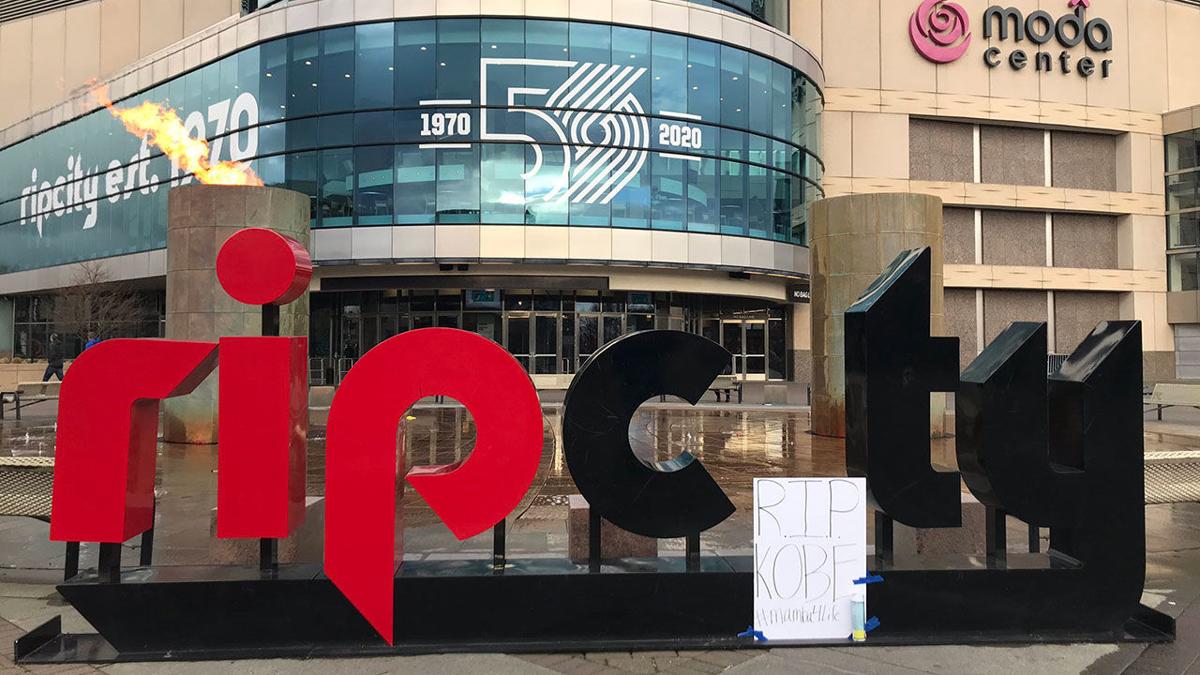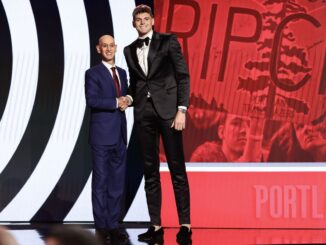
We’ve somehow made it through the weeks of coming to grips with the reality that Kobe Bryant, his daughter Gianna and seven other individual’s lives were wiped away. The tragedy feels like it struck everyone worldwide, and there was a common thread of disbelief.
It still remains for me. I think we all forgot that there was the Super Bowl that’d be played the following week. The outpour of pain, support for the families, and love was seen everywhere.
As we head into All-Star Weekend, where he’ll be honored in many ways, I wanted to shed light on Kobe’s connection to Portland. The legend would grow to be one of the most beloved by brands, but hated, yet respected by Blazers fans.
Kobe’s introduction to Rose City began as a rookie in 1996 when he signed his first shoe contract with Adidas where their North American headquarter is based out of North East Portland. The basketball category was created by legendary sneaker director Sonny Vacarro that was a part of many Hall of Fame player negotiations at the time. Kobe would go on to have six shoes with Adidas. The Crazy 8 seemed to be the first to rise to popularity. The KOBE was worn during the 1999-2000 NBA playoffs, and the KOBETWO came after. But it’d be his final style.
Kobe would be a shoe free agent for a year wearing numerous brands before joining the Beaverton competitor, Nike, in 2003. In 2006, he’d debut the Nike Zoom Kobe I. The LA times famously wrote that Nike has its Michael Jordan replica in their “Kobe Finds His Sole Mate” article. He worked with designer Eric Avar for many of the styles and between the reviewing of upcoming creations and meetings he’d venture out to the Nike WHQ each NBA offseason meetings.
The relationships built with executives were felt throughout the city following his passing with a moment of silence that brought hundreds of employees together. In an interview will Bill Simmons and Jalen Rose on Grantland’s Basketball Hour in 2015, Kobe spoke to how working with Nike on shoe creation and the stories around them was part of what helped him find his love for the writing stories.
Who would’ve thought being a part of designing his sneakers in Beaverton would be a piece of what birthed his second act as a “champion” winning an Oscar?
The Portland Trail Blazers were on the opposing end of numerous Mamba moments. For his career, Kobe averaged 25 ppg in a total of 83 games, scoring a total of 2,062 points against the Blazers. His best performance came on March 16th in 2007, cooking the Blazers by dropping 65 points on 8-of-12 from three in a Lakers win. In many ways, the birth of Kobe and Shaq’s back-to-back campaign began at the heels of the Blazers, who blew a 15-point lead in the fourth quarter of Game 7 in the Western Conference Finals. The famous crossover on Scottie Pippen that led to the famous alley-op to Shaq was on many levels the moment where Bryant and the team made their jump. Prior to that run, they were riddled with playoff shortcomings—many being a result of Kobe not carrying his weight. Anyone remember the “Kobe Stopper” formally known as Ruben Patterson? As a kid I was confused hearing this nickname from the Blazers guard. Did he really believe he could guard Bean for a series? Kobe politely handed him 26 points a game and a 3-0 first-round sweep in the 2002 playoffs. Bryant faced the Blazers five times in his Laker career and sent them packing each time.
The fans’ hatred is understood. One of Kobe’s last moments with the Blazers aside from the standing ovation in his last game at the Moda Center was the early crowing of Damian Lillard after playing him in his rookie year. “Hey man that boy’s serious and he’s not afraid of anything. He’s got the whole package.”
Classic Kobe, ending this with love after trying to rip your heart out.
We’ll miss you, Mamba. Your love, impact, and soul lives within many of us.




